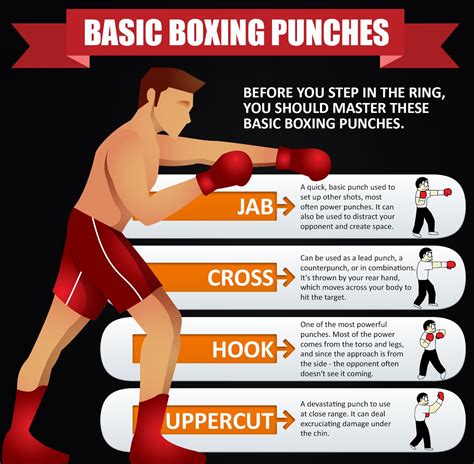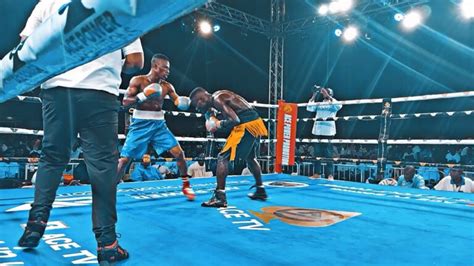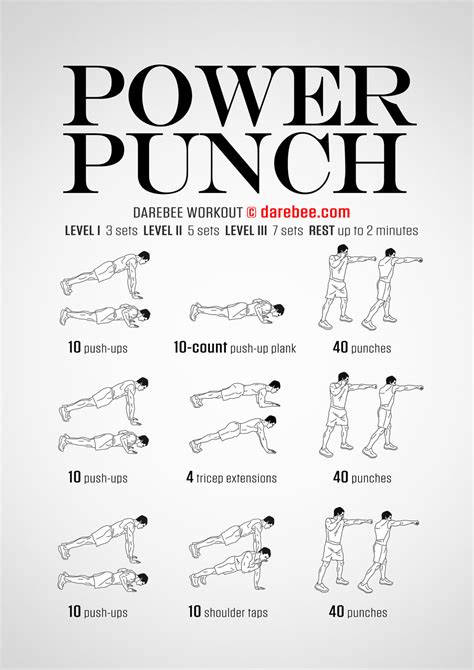Explore visualization techniques to enhance boxing performance, implement training routines, develop mental imagery skills, and evaluate the impact on your success.How To Use Visualization Techniques For Boxing Success
In the competitive world of boxing, success is not solely determined by physical prowess; mental strength plays a pivotal role. Visualization techniques offer boxers a powerful tool to enhance performance and achieve their goals. By crafting vivid mental images of their skills and strategies, athletes can not only boost their confidence but also fine-tune their techniques in their minds before stepping into the ring. This article explores the foundational concepts of visualization, practical steps to integrate these techniques into your training routine, and the lasting impact they can have on performance. Whether you are a novice eager to learn or a seasoned fighter looking to refine your approach, mastering visualization can unlock your full potential in the sport.
Understanding Visualization Techniques For Boxing Success
Visualization techniques have become increasingly popular among athletes, especially boxers, as a means of enhancing performance and achieving success in the ring. These techniques involve creating mental images of successful outcomes, which can help in building confidence, improving focus, and fine-tuning skills. In boxing, where split-second decisions can determine the outcome of a match, how to utilize these methods effectively can make a significant difference.
One of the key aspects of visualization is the ability to simulate the experience of boxing without physical action. This process includes envisioning skill execution, such as throwing punches, dodging hits, or executing defensive maneuvers. By mentally rehearsing these actions, boxers can create neural patterns similar to those formed during actual execution, leading to better performance during training and fights.
Additionally, visualization can help boxers manage anxiety and stress before a match. By imagining themselves calm, focused, and victorious, athletes can reduce pre-fight nerves and create a positive mental environment. This mental preparation contributes to better concentration, enabling boxers to stay present and react effectively during bouts.
Incorporating visualization into daily training routines emphasizes the mind-body connection essential for boxing success. Effective visualization exercises involve setting aside quiet time to engage in deep relaxation and visualizing specific aspects of a boxing match. This could include visualizing an opponent’s movements, imagining successful techniques, or picturing the winning moment.
By harnessing the power of imagery, boxers can take a significant step towards enhancing their skills and mental resilience, making visualization an invaluable tool for anyone serious about succeeding in the sport.
How To Implement Visualization Into Your Training Routine
Implementing visualization techniques into your boxing training routine can significantly enhance your performance by integrating mental training with physical practice. Here’s a structured approach on how to do it effectively:
1. Set Clear Goals: Before starting your visualization, define what you aim to achieve. This could be improving your footwork, perfecting a particular punch, or increasing your confidence during actual bouts.
2. Create a Conducive Environment: Find a quiet space where you can focus without distractions. This could be a gym corner, your home, or any place that feels comfortable for you.
3. Practice Relaxation Techniques: Begin your visualization sessions with relaxation methods like deep breathing or meditation. This helps to calm your mind, making it easier to visualize effectively.
4. Visualize Specific Scenarios: Spend time visualizing specific actions you will take in the ring. Imagine stepping into the ring, the sounds around you, and the movements you’ll execute during a match. This could include slipping punches, throwing combinations, or even defensive strategies.
| Scenario | Images to Visualize |
|---|---|
| Throwing a Jab | A clear arm extension, body mechanics, and target focus. |
| Footwork | Moving swiftly and fluidly with agility on the canvas. |
| Defensive Maneuvers | Evading punches, shifting your weight, and maintaining balance. |
5. Use All Senses: Engage all your senses when visualizing. Notice the smells, sounds, and feelings associated with boxing. The more vivid your visualization, the more it will benefit your performance.
6. Reinforce Positive Outcomes: Imagine winning matches or executing skills successfully. Visualizing positive outcomes can boost your confidence and motivation.
7. Incorporate it into Your Routine: Set aside 10-15 minutes before each training session or match day to visualize. Make it a consistent element of your preparation.
By following these steps, you can effectively integrate visualization into your boxing training routine, promoting mental readiness alongside physical training. This process will help you understand how to use visualization as a powerful tool for success in boxing.
Developing Mental Imagery Skills For Improved Performance
Developing mental imagery skills is crucial for boxers seeking to enhance their performance in the ring. This involves cultivating the ability to create vivid, detailed pictures in your mind of various scenarios you may encounter during a match. By engaging in this practice, you can effectively prepare both mentally and physically for upcoming fights. Here are some strategies on how to effectively develop these skills:
- Start with Relaxation: Before engaging in mental imagery, ensure you are relaxed. Techniques such as deep breathing or meditation can help calm your mind, creating a conducive environment for visualization.
- Visualize Your Techniques: Focus on visualizing specific boxing techniques or combinations. Picture yourself executing a perfect jab or an impressive uppercut, emphasizing the footwork and timing involved.
- Recreate Scenarios: Imagine different fight scenarios. Picture yourself in a match against various opponents, reacting to their movements, and planning your counters. This not only boosts your confidence but also prepares your mind for real-life encounters.
- Engage All Senses: When visualizing, involve all five senses to make the imagery more realistic. Feel the weight of the gloves, hear the sounds of punches connecting, and even envision the crowd’s energy.
- Review Past Performances: Analyze your previous fights while visualizing. Identify key moments where you excelled or struggled, and mentally rehearse alternative outcomes to improve your reaction for future matches.
By focusing on these techniques, you will enhance your mental imagery skills, which will contribute significantly to your boxing success. The more vivid and detailed your mental rehearsals, the more prepared you will be to perform at your best in the ring.
Evaluating The Impact Of Visualization On Boxing Outcomes
In the realm of boxing, where mental prowess is just as critical as physical strength, evaluating the impact of visualization techniques can provide invaluable insights into performance improvement. How To effectively assess this impact involves examining both qualitative and quantitative data.
Visualization techniques can lead to enhanced performance by helping boxers mentally rehearse techniques, strategies, and the execution of their skills. Here are several ways to evaluate the effectiveness of these techniques:
| Impact Area | Evaluation Method |
|---|---|
| Performance Metrics | Track win-loss records, scoring in sparring sessions, and overall fight statistics before and after implementing visualization. |
| Skill Acquisition | Assess improvement in specific skills such as footwork, speed, and defense through skill drills and feedback from coaches. |
| Mental Resilience | Evaluate stress and anxiety levels during training and competition, using tools like self-reported questionnaires or heart rate variability measurements. |
| Focus and Concentration | Monitor the ability to maintain focus during training and fights, using performance logs and subjective assessments. |
In addition, keeping a journal can be beneficial. Boxers should document their visualization practices, noting the specific scenarios they visualized, emotions felt during visualization, and subsequent performance outcomes. This reflection helps establish a clearer correlation between the mental imagery utilized and improvements directly observed in the ring.
Overall, understanding the impact of visualization in boxing goes beyond mere anecdotal evidence. By systematically evaluating how visualization contributes to various performance metrics, boxers can refine their mental training strategies and potentially elevate their game to new heights. By asking how to maximize these methods, athletes can continuously adapt and optimize their mental preparation for fighting success.
Maximizing Your Boxing Success Through Consistent Visualization Practices
To achieve peak performance in boxing, it is crucial to incorporate consistent visualization practices into your training regimen. How to maintain a focused and regular visualization routine will ultimately dictate the effectiveness of the technique in enhancing your performance inside the ring. Here are some strategies to maximize your boxing success through visualization:
By understanding how to consistently implement these visualization practices, you can unlock your full potential as a boxer, ultimately leading to greater success in your bouts. Remember, the mind is a powerful tool, and using it effectively can be the difference between winning and losing.
Frequently Asked Questions
What are visualization techniques in boxing?
Visualization techniques in boxing involve mentally rehearsing the actions, strategies, and scenarios one might encounter in a match. This can include visualizing punches, footwork, and defensive maneuvers to improve performance.
How can visualization improve performance in boxing?
Visualization can enhance performance by building muscle memory, increasing confidence, and helping athletes prepare mentally for different fight scenarios. It encourages focus and aids in stress management.
What is the best time to practice visualization techniques?
The best time to practice visualization techniques is during training sessions, as well as before a fight. Athletes can dedicate a few minutes after their workouts or before bedtime to visualize their performances.
Can beginners benefit from visualization techniques?
Yes, beginners can benefit significantly from visualization techniques. They can help novices learn strategies, improve technique, and build confidence, which is crucial during the initial stages of training.
What are some effective visualization exercises for boxers?
Effective visualization exercises for boxers include imagining the entire sequence of a fight, visualizing successful punches landing, and rehearsing defensive moves against an opponent’s aggressive tactics.
Should visualization be combined with physical training?
Absolutely. Visualization should complement physical training to maximize effectiveness. While physical training builds strength and skills, visualization enhances mental readiness and tactical understanding.
How can an athlete stay focused during visualization?
To stay focused during visualization, athletes should find a quiet space, remain relaxed, and use deep breathing techniques. Setting clear goals for each visualization session can also help maintain focus.









